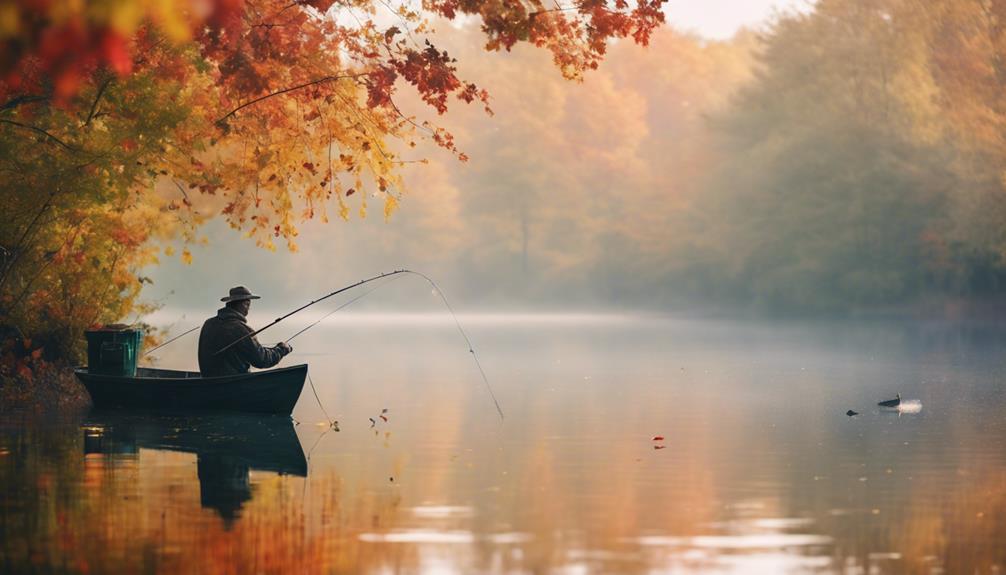When it comes to fishing, few techniques are as fascinating and effective as spawn fly fishing. This unique method involves using flies that mimic the appearance of fish eggs or spawning fish, making it an irresistible target for predatory species. In this comprehensive guide, we will delve into the intricacies of spawn fly fishing, covering everything from the best techniques to tackle options, ensuring you can maximize your success on the water.
Understanding Spawn Fly Fishing: What Is It?
Spawn fly fishing is a specialized technique that targets fish during their spawning season. During this time, fish are more aggressive and protective, making them more likely to bite. The term “spawn fly” refers to artificial flies designed to imitate fish eggs or small fish that are associated with spawning activities. These flies are often used in freshwater fishing for species such as trout, steelhead, and salmon. Understanding the behavior of fish during the spawning season is crucial for successful spawn fly fishing.
The Best Time for Spawn Fly Fishing
Timing is critical when it comes to spawn fly fishing. Generally, the best times to fish using this technique are during the spring and early summer months when many freshwater species are spawning. For example, in many regions, trout begin to spawn in late fall and early spring, while salmon usually spawn in late summer to early autumn. Observing local spawning patterns will help you determine the optimal fishing times, increasing your chances of a successful catch.
Essential Gear for Successful Spawn Fly Fishing
Having the right gear can make a significant difference in your spawn fly fishing experience. Here’s a list of essential gear to consider:
1. Rod and Reel: A medium to medium-heavy fly rod (8 to 10 feet) is ideal for casting spawn flies. A matching reel with a good drag system is essential for fighting larger fish.
2. Line and Tippet: Use a weight-forward floating line and a 4X to 6X tippet to maintain a natural drift.
3. Spawn Flies: Invest in or tie various patterns of spawn flies. Popular choices include egg patterns like the Glo Bug or bead head eggs.
4. Waders: Waterproof waders will keep you dry and comfortable while wading in rivers or streams.
5. Net: A good landing net will help you safely catch and release fish.
Techniques for Effective Spawn Fly Fishing
To be successful in spawn fly fishing, you need to master a few key techniques:
1. Drifting: Cast your spawn fly upstream and allow it to drift naturally downstream. This mimics the movement of real fish eggs, enticing predatory fish.
2. Indicator Fishing: Use a strike indicator to help detect subtle bites. This is particularly useful in deeper water where you need to maintain a specific depth.
3. Nymphing: Sometimes, you can achieve better results by combining a spawn fly with a nymph below it. This technique gives fish two potential targets.
4. Casting Techniques: Practice your casting to ensure accuracy. Fish tend to be more cautious during spawning, so a precise cast can make all the difference.
Choosing the Right Spawn Fly Patterns
Selecting the right spawn fly patterns is critical to your success. Popular patterns include:
– Glo Bug: This brightly colored egg pattern is often effective for trout and steelhead.
– Yarn Eggs: Made from yarn, these flies are lightweight and float well on the water.
– Bead-Head Eggs: These flies sink quickly and create a realistic appearance, making them ideal for deeper waters.
Experimenting with various colors and sizes can also yield better results, as fish can be selective based on their environment.
Where to Fish: Ideal Locations for Spawn Fly Fishing
Knowing where to fish can significantly enhance your spawn fly fishing experience. Look for locations where fish are known to spawn, such as:
– Rivers and Streams: Areas with gravel beds and slow-moving water are prime spawning spots for many species.
– Lakes: In lakes, focus on structures such as rocky shorelines or underwater vegetation where fish may spawn.
– Fish Hatcheries: Some hatcheries offer excellent opportunities for spawn fly fishing, especially during stocking periods.
Research local regulations and areas known for productive spawn fishing to find the best spots.
Common Mistakes to Avoid in Spawn Fly Fishing
Even experienced anglers can make mistakes when it comes to spawn fly fishing. Here are some common pitfalls to avoid:
1. Fishing at the Wrong Time: Make sure you’re fishing during peak spawning seasons.
2. Using the Wrong Gear: Ensure your rod, reel, and line are appropriate for the type of fish you’re targeting.
3. Overcasting: Fish can be easily spooked, especially during spawning. Focus on accuracy rather than distance.
4. Ignoring Water Conditions: Always pay attention to current conditions like water clarity and temperature, which can affect fish behavior.
By avoiding these mistakes, you can improve your effectiveness and enjoyment while spawn fly fishing.
Conclusion: Embrace the Art of Spawn Fly Fishing
In conclusion, spawn fly fishing is not only a thrilling way to catch fish but also a technique that requires skill, knowledge, and patience. By understanding the behavior of spawning fish, choosing the right gear, and mastering effective techniques, you can significantly enhance your fishing success. Whether you are a seasoned angler or a beginner, embracing the art of spawn fly fishing can lead to memorable experiences on the water. So grab your gear, find the perfect spot, and enjoy the thrill of the catch!
